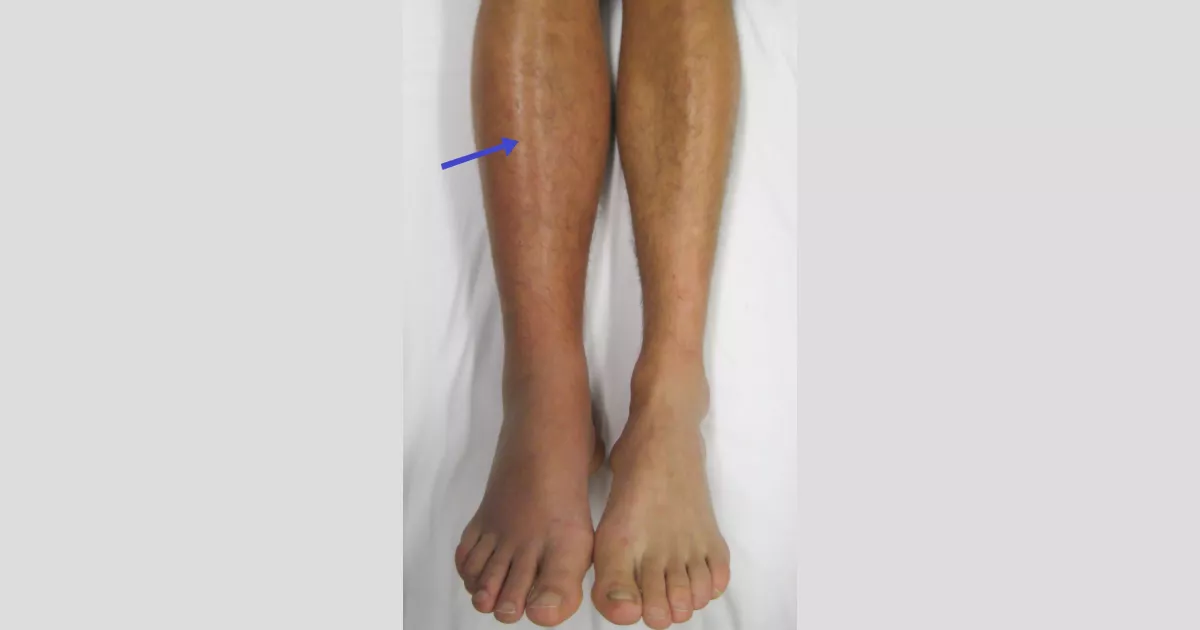Deep vein thrombosis (DVT) is a blood clot that forms in a deep vein, usually in the legs or pelvis, though it can occur in the arms. Symptoms may include pain, swelling, redness, and enlarged veins in the affected area. However, DVT can also be asymptomatic. DVT is a type of venous thrombosis.
1950: Virchow's Triad Term Coined
In 1950, the framework of hypercoagulability, stasis, and endothelial injury, identified by Rudolf Virchow, was termed Virchow's Triad.
1962: Subcutaneous Injections of LDUH Introduced
In 1962, subcutaneous injections of LDUH (Low-Dose Unfractionated Heparin) were introduced as a pharmacological therapy for DVT.
1974: Vascular Inflammation and Venous Thrombosis Proposed to be Interrelated
In 1974, vascular inflammation and venous thrombosis were first proposed to be interrelated.
1982: Subcutaneous Injections of LMWH Introduced
In 1982, subcutaneous injections of LMWH (Low-Molecular-Weight Heparin) were introduced as a pharmacological therapy for DVT.
1986: Utility of Probe Compression Demonstrated
In 1986, utility of probe compression was demonstrated, ultrasound became the preferred diagnostic method for DVT.
1998: Hillary Clinton First Diagnosed with DVT
In 1998, Hillary Clinton was first diagnosed with DVT while serving as First Lady.
2009: Hillary Clinton Diagnosed with Recurrent DVT
In 2009, Hillary Clinton was diagnosed with recurrent DVT.
2011: Serena Williams Hospitalized for PE thought to have originated from DVT
In 2011, tennis star Serena Williams was hospitalized for PE thought to have originated from DVT.
2011: Estimated Cost of Initial VTE Hospitalization in Europe
In 2011, the estimated cost of initial VTE hospitalization in Europe was approximately €2000 to 4000.
2012: NICE Recommendations for Catheter-Directed Thrombolysis
In 2012, NICE recommended that catheter-directed thrombolysis should be considered for iliofemoral DVT patients with symptoms lasting less than 14 days, good functional status, a life expectancy of 1 year or more, and a low risk of bleeding.
2015: Estimated Cost of Initial DVT Hospitalization in the US
In 2015, the estimated initial cost of DVT hospitalization for a US patient was approximately $10,000.
2017: Serena Williams Accurately Advocates for PE Diagnosis and Treatment
In 2017, Serena Williams, due to her knowledge of DVT and PE, accurately advocated for herself to have a PE diagnosed and treated after experiencing symptoms post C-section.
2018: Study Links IVC Filter Placement with Increased DVT and Mortality
A 2018 study associated IVC filter placement with a 50% reduction in PE, a 70% increase in DVT, and an 18% increase in 30-day mortality when compared to no IVC placement.
2018: American Society of Hematology Suggested Preventive Measures for Pregnancy-Related VTE
In 2018, the American Society of Hematology suggested preventive measures for pregnancy-related VTE.
2018: American Society of Hematology Identified Research Priorities
In their updated 2018 clinical practice guidelines, the American Society of Hematology identified 29 separate research priorities, most of which related to patients who are acutely or critically ill.
2019: Genetic Loci Associated with VTE More Than Doubled
A 2019 study published in Nature Genetics reported more than doubling the known genetic loci associated with VTE.
2019: European Society of Cardiology Urges Abandonment of Provoked/Unprovoked DVT Dichotomy
In 2019, The European Society of Cardiology urged for the abandonment of the provoked/unprovoked DVT dichotomy in order to encourage more personalized risk assessments for recurrent VTE.
2020: NICE Recommendations for Catheter-Directed Thrombolysis
In 2020, NICE maintained their 2012 recommendations that catheter-directed thrombolysis should be considered for iliofemoral DVT patients with symptoms lasting less than 14 days, good functional status, a life expectancy of 1 year or more, and a low risk of bleeding.
2020: NICE Review Finds Little Evidence for IVC Filter Use
In 2020, a NICE review found "little good evidence" for the use of IVC filters in treating DVT.
Mentioned in this timeline

Serena Williams is a highly accomplished American former professional tennis...

Hillary Diane Rodham Clinton is an American politician lawyer and...

Stars are luminous spheres of plasma bound by their own...
Trending
58 minutes ago Turkish Airlines Expands Globally, Adds to Fleet, and Restarts Mombasa Flights.

59 minutes ago Chase Stokes and Madelyn Cline step in amid 'Outer Banks' director's alleged misconduct.

59 minutes ago Luigi Mangione, accused in CEO murder case, listens to Charli XCX and Taylor Swift in jail.

59 minutes ago Anna Kalinskaya's upcoming matches: WTA Hong Kong and Merida Open Akron predictions.
2 hours ago UPS Announces 48,000 Layoffs in Cost-Saving Turnaround, Stock Rallies Amidst Teamsters Bargain

60 minutes ago Caitlyn Jenner's Awkward 'Kardashians' Appearance, Relationship Status with Kris, and Kendall's Views.
Popular

Gavin Newsom is an American politician and businessman currently serving...

The White House located at Pennsylvania Avenue NW in Washington...

Doug Ford is a Canadian politician and businessman currently serving...

George Soros is a Hungarian-American investor and philanthropist with a...

XXXTentacion born Jahseh Dwayne Ricardo Onfroy was a controversial yet...

Candace Owens is an American political commentator and author known...
